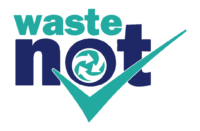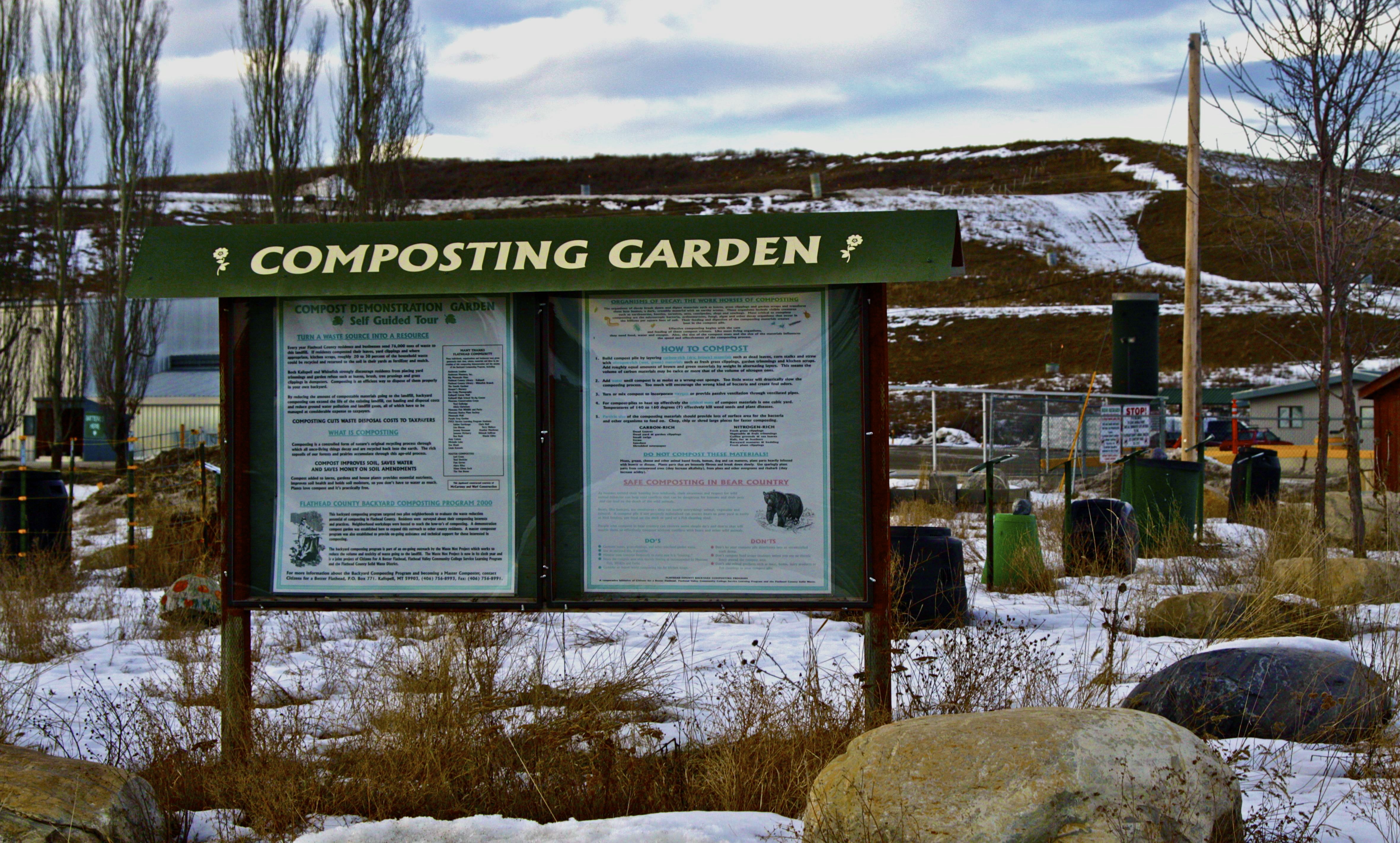Composting is easy! Just choose a location, add yard and kitchen waste, mix it up, and keep it moist. Here’s the recipe:
1. Decide which type of compost pile works best for you. Buy or build a bin to hold your compost, or just make a pile in your yard. Some things to consider: how much volume you’ll have, what types of materials you’ll be composting, how easy you want it to be to turn over the compost, whether you want it enclosed or not, and how much do you want to spend.
2. Pick a location. Your compost should be out of the direct hot sun so it does not dry out. Consider convenience of location (such as close to the source of waste), proximity to a water source, and the place that finished compost will be used.
3. Layer green and brown materials alternately. If you have woody materials, place them on the bottom – they will aid in aeration. Water the layers as you go. Be sure to add enough materials. If your pile is too small it won’t heat up as easily.
4. Mix the materials together.
5. Let it sit, but keep moist like a damp sponge. Water if needed. Continue to add materials as you create them. Turn the pile over on occasion so that it is well aerated.
6. Once you have a good sized pile, you’ll need to stop adding materials so that the compost can finish “cooking.” Consider a second compost bin or one with two chambers if you plan to continually add materials to your compost.
7. Your compost is done when it looks like dark soil and no longer heats up.
Tips for Composting in Bear Country

A compost pile can be a tasty attraction for bears. Here are some suggested do’s and don’t’s, particularly if you live in a bear-prone area.
Do:
• Compost yard clippings and non-food debris
• Use an enclosed bin and/or electric fencing if possible. Download: A beginner’s guide to Deterring Bears with Electric Fencing
• Check with Montana Fish, Wildlife and Parks about bear-prone areas
• Monitor your compost to be sure it is ‘cooking’ and not putting off odor
• Consider indoor worm bin (vermicompost) composting for food waste
• Watch for other critters (raccoons, foxes, dogs) poking around your bin — this is a warning that your bin is too smelly and may attract bears.
Don’t:
• Let your compost pile turn into an unmanaged trash heap
• Compost food scraps unless well protected and contained. Bury food scraps into the middle of an outdoor pile
• Add animal products such as meat, bones, dairy products and fish waste to your pile
Visit the WasteNot Compost Demonstration Garden
The Compost Demonstration Garden has moved from the landfill to the FVCC campus. It has a variety of different home compost bins you can self-tour and information about the pros and cons of each style.
To Find the Compost Garden
From Hutton Ranch Rd: At the roundabout behind Walmart, take the exit to the east. It will become a dirt road almost immediately. Follow the road around and stay to the right once you enter the logger sports area. Take a right onto the next dirt road and drive south until the road widens. You’ll see the Compost Garden and shed to your left. Click here for a Compost Garden map. Note: the gate to the logger sports area is locked after 5:00pm and on most weekends.
If you are interested in learning more or volunteering, please contact Citizens for a Better Flathead at (406) 756-8993.
Go back to Compost 101

